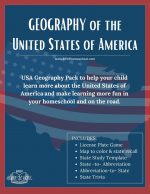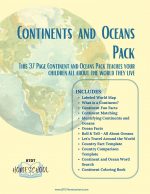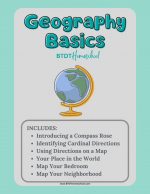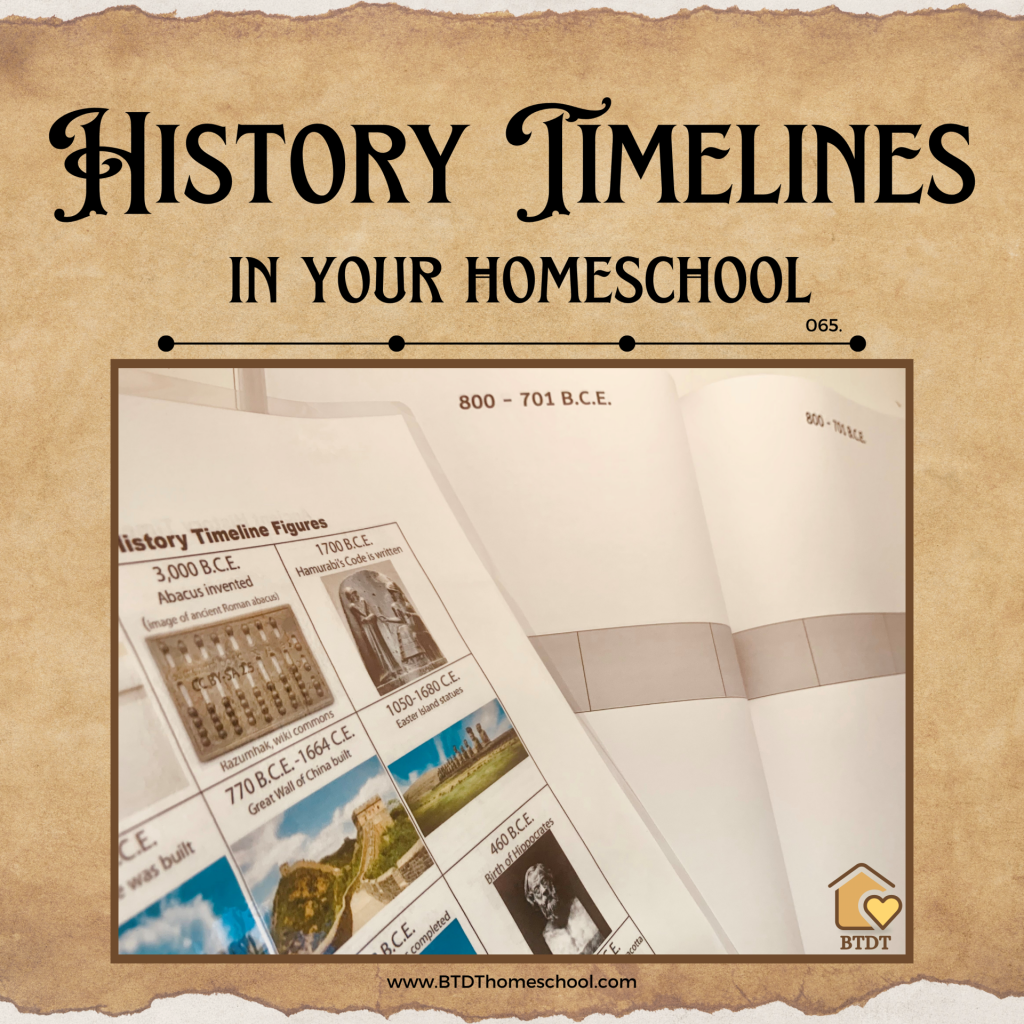
029.
Around The World In Your Homeschool
What are some fun ways to learn geography?
How do you teach about different cultures in your homeschool?
What are our favorite geography resources?
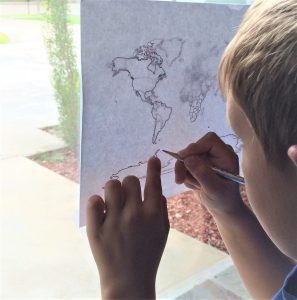
Podcast Episode 029:
TWO WAYS TO LISTEN TO THIS EPISODE:
1. Click PLAY Button Above ^^ to listen here.
2. OR Listen on your favorite podcast platform:
Scroll Down to get your FREEBIE this Week!
Geography Bundle (pdf)
Brand New to Homeschooling?
GETTING START PAGE >>
Kindergarten Page >>
High School Series >>
Show Notes
Geography is not a subject to be skipped in your homeschool. It has been my favorite subject to teach and one that has brought so much fun into our home over the years. From mapping and directions, to learning about different cultures and how to be a global citizen, your family is sure to fall in love with geography too.
Geography is a topic many families put off until later but really, it’s a subject that you can introduce pretty early on. Kids as young as kindergarten are able to grasp concepts like directions and maps and are often eager to learn about the continents and other countries. Some people avoid the topic because they think it’s boring. Memorizing things like states, countries, large bodies of water and spitting out facts sounds dull, so instead, reframe it as instilling a natural curiosity about the world and other cultures.
For homeschoolers who may use a history centric curriculum or a trivium approach. which describes the learning stages as children mature (Grammar, Logic, and Rhetoric), introducing geography early gives a great base at a time when children are naturally inquisitive and are willing and able to absorb tremendous amounts of information. This makes having a general feel for where things are handy as you move into historical timelines and world events.
Our Book of Centuries and Timeline Figures are a great addition to every homeschool curriculum.
From a very young age, we always incorporated a timeline in our homeschool which really helped my kids visualize how history connects together. It also helps them identify patterns that have occurred throughout history. Let’s face it, it’s a lot easier to memorize historical events when we can see it chronologically, and it makes sense in our minds.
Geography, history, and culture really intertwine because when you learn about historical events, you naturally learn about the locations and the people that reside in those areas.

What are some fun ways to learn geography? (5:29)
Start with very general mapping skills
The book Me on a Map by Joann Sweeney is also great for this. This playful introduction to maps shows children how easy it is to find where they live and how they fit into the larger world. It starts where they are in their bedroom, in their house, in their neighborhood and then broadens through their community, state, country.
Which direction are we traveling? You can look at a map directory to find a store, or a trail map at your favorite park, or a highway sign that says how many miles to the next city. You can talk about map keys and symbols, physical directions like north, south, east, west. Talk about the sun setting in the west and rising in the east and other landmarks in your area that may indicate direction.
We talk about how cities are often built on a grid and you can teach your kids what streets make up that grid in your area and what direction they travel. Passengers have more time to notice things like this and it helps young drivers, too. We count a lot on GPS for things, but I am still a big fan of an old school street map and atlas books, for finding things.
Take a road trip
We just did an awesome field trip episode and have a cool post with 100 field trip ideas. Hop in the car and go on one! One activity that my kids always loved is ‘passenger driver’. Where we spent an afternoon driving and them telling me which direction to go. At every turn, they just tell me. I would’ve never thought of this, it was my kids idea. I guess when you’re trapped in the passenger seat, you have no control, and this gave control to them because I went exactly where they told me. It was always an adventure!
We have a friend that has always put together incredible road trips for her family- her Texas history road trip and Civil Rights road trips were my favorite, but you don’t even have to go far! For long road trips, snacks, audio books or podcasts, and road trip games can be really fun. We loved making elaborate snack trays and a folder of car games like highway bingo, the license plate game, state fact sheets, etc.
Stuff you missed in history class is a favorite podcast for us to listen to on road trips. We once listened to an episode about Native American Mounds and happened to be crossing into Louisiana while listening. We made a quick stop at the welcome center, picked up a brochure, and hit it on the return.
I always loved having a road atlas to track our progress. This one is a lot of fun for kids:
Start or join a Geography club
Geography clubs are one of my favorite things! They are great for teaching kids research skills and how to make geography and cultural connections. They learn physical geography, historical information, cultural facts, and artistic skills. I ran several geography Clubs over the years.
We gathered families together and we would choose a country to study and usually meet two times a month. Each family was responsible for presenting an aspect of that country. Typically, the family hosting would prepare the food, another family would talk about geographic location and topography and typically present a map, another family would discuss the people and culture, and often dressed in traditional attire from that country, another family would prepare a game we played that originated from that country, another family did a presentation on the type of government and political system, and another prepared a craft from that country, and more! Just depended on how many families attended. It was an all-afternoon party!
Games
You know how much we love our board games. One of my all-time favorites is Ticket to Ride- First Journey, US Version, European Version:
Ticket to Ride First Journey Board Game | Strategy Game | Train Adventure Game | Fun Family Game for Kids and Adults | Ages 6+ | 2-4 Players | Average Playtime 15-30 Minutes
Ticket to Ride Board Game | Family Board Game | Board Game for Adults and Family | Train Game | Ages 8+ | For 2 to 5 players | Average Playtime 30-60 minutes
Ticket to Ride Europe Board Game | Family Board Game | Board Game for Adults and Family | Train Game | Ages 8+ | For 2 to 5 players | Average Playtime 30-60 minutes
When my kids were older, they loved the game RISK. What’s not fun about taking over the world in a game of strategic domination? We have a really fancy vintage game. We got it at a garage sale and my kids always thought it was hysterical because it actually had the USSR. Even though the information was not completely accurate, we had so many discussions about it they will never forget.
Risk Game | Family Board Game | Board Game for Adults and Family | Strategy Game | Ages 10+ | For 2 to 5 players
The World Game is also a lot of fun and a good way to teach geography to the entire family. I promise, with this game you are going to learn a lot too!
The World Game – Geography Card Game | Ages 7+ | For 2 to 5 players | Educational Board Game for Kids, Family & Adults
Books and other media
We read the book 360 Degrees Longitude: One Family’s Journey around the World in one of our homeschool programs. It chronicles a family’s journey on bikes through 28 countries. The book also uses Google Earth as a compliment to the narrative. You can follow along virtually through maps, videos, photos, and text.
360 Degrees Longitude employs Google Earth as a compliment to the narrative. Using your computer you can spin the digital globe to join the adventure cycling through Europe, Africa, and the Andes.
For younger kids, the older show “Where on Earth is Carmen Sandiego” still has a ton of appeal and is online to stream or you can also get it from your library – or you can tune into the new version. She’s an international thief whose capers are used to teach children geography via tracking her down as she swipes monuments and sneaks them around the world.
Penpals or Postcrossing
Get a penpal- we often see requests for these online. I also stumbled on this kind of accidental geography project while looking for penpals years ago. It’s a website called postcrossing. Basically, you set up a profile and send postcards to people and others send them back to you. Meanwhile, you can track on a map and learn about the different places your cards have come from.
Geocaching, Letterboxing, and Orienteering
Geocaching is a type of global treasure hunt. In this real life treasure hunt, people look for hidden treasure or caches. This is fun for all ages and there are all types of caches from micros, to large ammo boxes. Seekers use a GPS (your cell phone) to find the treasures and then log their finds both in the cache or online. The bigger caches may have cool items that you can take or trade. Caches are everywhere. We were really obsessed with this for a while and it took us to some really cool places we would not have found otherwise. I kept a gallon size baggy in my glove box with a pen and little plastic animals which I used for cache trades.
Letterboxing is in the same vein as geocaching– except that rather than GPS, letter boxes are found through elaborate directions and landmarks. Once you find the, they contain a book and a unique stamp, which you put in your book, and you can sign or carry your own stamp to put in theirs.
Orienteering is a kind of sport that requires navigational skills using a map and compass to navigate from point to point. It’s typically in a diverse and often unfamiliar terrain and sometimes involves you moving at a certain speed. You’ll have a topographical map with prepared control points. You can find orienteering groups in your city, this is also a common scouting activity. I know friends who do races that involve orienteering as well. There’s a permanent orienteering course at the Bob Woodruff Park in Plano and you may be able to find one in your area.
GPS my City is another thing I talked about in our field trip episode and that we have a blog post coming. It’s an app that you can use to read travel articles and then create walking tours in various cities around the globe. I mainly use this while traveling, but you could also use it in your own town.
How do you teach about different cultures in your homeschool? (20:13)
So we talked about geography club being a great way to introduce different countries and cultures to your students. One of my favorite ways of incorporating cultural studies is through food. Yum. Cooking is not only a great skill to know, it’s a fantastic way to teach about different cuisines. We’ve used a lot of different cookbooks over the years but a couple that I love that have kid friendly, recipes and easy to follow instructions are
International Cooking for Kids: Multicultural Recipes to Make with your Family from Around the World (Cooking with Kids Series)
If you don’t want to do this in your own kitchen and prefer to support local (and often minority owned businesses ), I really recommend trying out visiting different restaurants and cuisines in your area. Often it’s a great way to expand your food palate, try some dishes that may be totally new to you, and learn something about the culture straight from the source. We used to have a Culture Club restaurant group where we met for lunch once every two weeks and tried different foods. We would read up about the country or region beforehand and discuss over lunch. If you have a friend who can guide you in the food of their culture, that’s even better. We have a friend who has graciously done an Asian grocery market tour of her favorite items and always offers to give friends a crash course in Korean BBQ.
Universal Yums
Universal Yums is something we did for over 10 years in our homeschool. If you’ve not heard of it, you’ve got to check it out. Universal Yums is a subscription service that sends you a box of snacks and candies from a different country every month. It was only about $12 a month and they sent us so many snacks that were delicious and unique and often extremely difficult to find in the US.
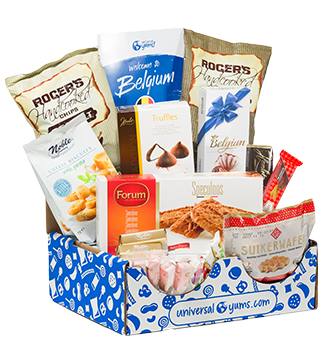
Each Universal Yums box also came with an interactive guidebook for that country. It described in detail each item and where the food originated. We would read these right before we tried each snack. It was a big event in my house. The booklet also has trivia, games, recipes, culture and more from that country. We would often head to the library and gather books and continue reading. It really was like getting a present every month in the mail.
Model United Nations is an educational simulation in which students learn about diplomacy, international relations, and the UN at a conference the students will work as a representative of a country and they must solve problems with other delegates from around the world. They learn all kinds of skills like research, public speaking, debate, writing, in addition to critical thinking, teamwork and leadership. While it’s typically an extracurricular activity, some schools also offered us a class. My kids have been actively involved in model United Nations groups since they were little. The program that they do is a middle school program but it involves kids as young as 8 to 10 as pages in the program and then high school kids run the program as the secretariat.
There are all kinds of model United Nations programs out there. The YMCA runs a large one and there are high school groups that participate, even college groups participate in model United Nations. It’s really an awesome activity that engages students and allows them to develop a deeper understanding of current world issues, world politics and just the things that can affect different cultures and countries.
Cultural events and Celebrations— We touched on this in our field trip episode, too, but visiting cultural events and celebrations in your area is a great way to learn about others. We love attending events like the Greek Festival, Chinese New Year, and other country specific or cultural celebrations.
And of course, reading! We specifically search for books that contain characters of color as well as main characters that may represent a minority point of view. We look for books that are written by an author of diversity or color from their perspective. Books that feature myths or folktales from other countries are often favorites and can show kids the parallels between these stories and the stories they may have grown up with. You do want to make sure you are choosing quality books and not ones that reinforce negative stereotypes. We want to encourage our kids to be global citizens and celebrate diversity and inclusion.
Heritage Mom
We are including a couple links to websites with wonderful book lists. Amber O’Neal Johnston’s Heritage Mom site has a fantastic page of recommendations, mostly including African and African American, but also, books about refugees and migrants, etc.
Pragmatic Mom
Another list is from Mia WenJen’s site. She is the co-creator of Multicultural Children’s Book Day (January 25th). Her Pragmatic Mom site is amazing.
Kelly Tudor is Lipan Apache and a citizen of the Lipan Apache Tribe of Texas. She is culturally intact, speaks her language, and is active in the local Native community. She has a blog that reviews curriculum and books from an Indigenous perspective and she’s also a very popular Indigenous instructor on Outschool. We will link to both her classes and her blog.
What are our favorite geography homeschool resources in addition to all the ones we’ve listed so far? (27:08)
Mapping the World with Art by Eileen Henry is almost 3 books in one- the first section is a history text that tells the story of cartography from ancient Mesopotamia up to the discovery of Antarctica, the second section provides step-by-step drawing lessons for each of those history lessons, and in the last section provides extra activities that you can use with your students like worksheets, group games, historical crafts, art projects etc.
Mapping the World with Art is such a great introduction to breaking down the world in pieces and helping the kids understand the small parts of a whole. its making cartography and geography so much more interesting for them
Build Your Library is a secular, Charlotte Mason inspired, literature-based curriculum that both of us have used for many years.
BYL is a secular, Charlotte Mason inspired, literature-based curriculum that both of us have used for many years. Level 0 is a gentle tour around the world and introduces kids to seven continents and explores amazing places, people and the animals of these regions. It is appropriate for about 5- to 7-year-olds. Level 7 explores various landscapes, continents, culture, and people with another diverse and exciting book list. The literature in this level takes you to many destinations across all seven continents. This level also teaches about the religions of the world. This suits a middle school age range and is a great program for multi age families. The levels do not include math, so it is flexible and easy to combine different age kids.
Holling Clancy Holling was an author and artist who worked in a taxidermy department of the Field Museum of Natural History in Chicago and spent time working in anthropology. For many years, Holling C. Holling dedicated much of his time and interest to making books for children. Much of the material he used was known to him firsthand, and his wife, Lucille, worked with him on many of the illustrations. He has 4 books that we have used. Disclaimer: they are very old books.
There’s an awesome set of maps from the Beautiful Feet company (not a secular resource, but they are just blank maps) that we bought to go with these. They are on parchment style paper and just gorgeous- we colored them in and hung them in our classroom- they make excellently keepsakes.
From mapping and directions, to learning about different cultures and how to be a global citizen, geography is not a subject to be skipped!
This Week’s Freebie:
Download your FREE Geography Basics Bundle! It introduces a compass rose, cardinal directions, using maps, and identifying your place in the world. It also has grids that encourage your child to map their bedroom and neighborhood.



